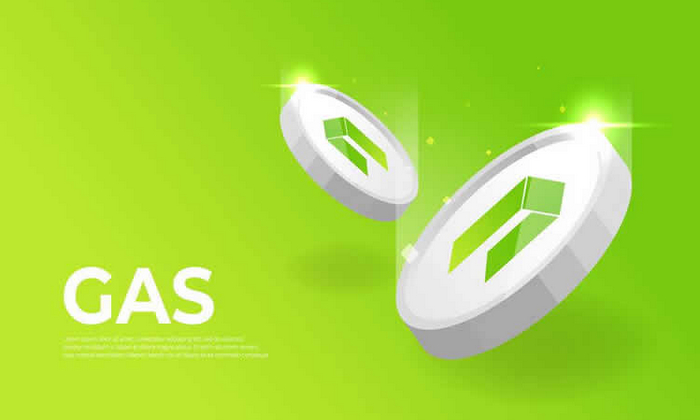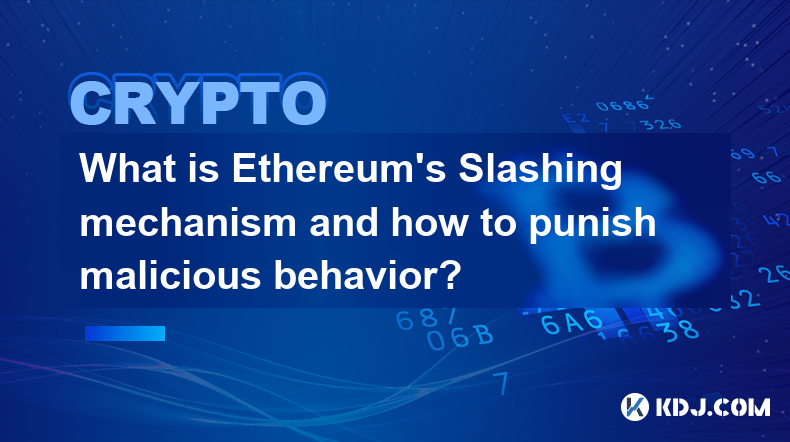-
 Bitcoin
Bitcoin $79,711.4041
-3.14% -
 Ethereum
Ethereum $1,538.5066
-5.60% -
 Tether USDt
Tether USDt $0.9992
-0.05% -
 XRP
XRP $1.9841
-1.63% -
 BNB
BNB $578.1462
0.23% -
 USDC
USDC $1.0000
0.01% -
 Solana
Solana $113.3900
-2.89% -
 Dogecoin
Dogecoin $0.1553
-1.34% -
 TRON
TRON $0.2355
-1.37% -
 Cardano
Cardano $0.6168
-0.36% -
 UNUS SED LEO
UNUS SED LEO $9.4115
0.23% -
 Chainlink
Chainlink $12.2586
-1.13% -
 Avalanche
Avalanche $18.4989
1.74% -
 Toncoin
Toncoin $2.9411
-5.24% -
 Stellar
Stellar $0.2323
-1.94% -
 Hedera
Hedera $0.1694
0.41% -
 Shiba Inu
Shiba Inu $0.0...01175
-0.30% -
 Sui
Sui $2.1221
-2.88% -
 MANTRA
MANTRA $6.4450
-4.88% -
 Bitcoin Cash
Bitcoin Cash $293.7100
-2.93% -
 Litecoin
Litecoin $74.7327
-0.77% -
 Polkadot
Polkadot $3.4981
-2.33% -
 Dai
Dai $0.9997
-0.03% -
 Bitget Token
Bitget Token $4.1986
-2.67% -
 Ethena USDe
Ethena USDe $0.9985
-0.04% -
 Hyperliquid
Hyperliquid $14.1454
4.74% -
 Pi
Pi $0.5960
0.47% -
 Monero
Monero $200.4963
-0.82% -
 OKB
OKB $54.0669
1.28% -
 Uniswap
Uniswap $5.0725
-4.19%
When was Gas coin issued?
Gas coins, a vital part of blockchain networks, empower users to incentivize miners, control transaction execution time, and facilitate the seamless functioning of decentralized applications (dApps).
Nov 15, 2024 at 04:42 pm

The Evolution of Gas Coins in the Blockchain Landscape
Introduction
Gas coins play a crucial role in the functioning of blockchain networks. They serve as a form of payment for transaction fees, enabling users to execute smart contracts, transfer assets, and access various network services. The inception and subsequent proliferation of gas coins have significantly influenced the landscape of decentralized applications (dApps) and the overall usability of blockchain technology.
1. The Genesis of Gas Coins
The concept of a gas coin emerged with the advent of Ethereum in 2015. To address the scalability limitations of the Bitcoin blockchain, Ethereum introduced a new virtual machine (EVM) capable of executing more complex computations. However, executing these computations required computational resources, which were allocated in proportion to the amount of "gas" a user was willing to pay. This gas fee served as a payment to miners for validating and including transactions in Ethereum blocks.
2. The Role of Gas Coins in Transaction Validation
Gas coins empower users to incentivize miners to process their transactions quickly and efficiently. Miners prioritize transactions with higher gas fees, resulting in faster confirmation times. This fee also ensures that network resources are not consumed excessively by malicious actors or spammers. By introducing gas fees, blockchains prevent the clogging of their networks and maintain a fair distribution of resources among legitimate users.
3. The Emergence of Gas Limit and Gas Price
The introduction of the "gas limit" parameter allowed users to specify the maximum amount of gas they were willing to expend on a transaction. This prevented users from accidentally overspending on gas fees. Simultaneously, the "gas price" allowed users to adjust the priority of their transactions by paying a higher fee to expedite their execution. These two parameters provided users with greater control over transaction costs and execution time.
4. The Rise of Alternative Gas Coins
As the Ethereum ecosystem flourished, other blockchain protocols emerged, introducing their own gas coins. Notable examples include Binance Coin (BNB), NEO Gas, and Harmony (ONE). These gas coins functioned similarly to Ether (ETH) but offered different advantages, such as lower transaction fees, faster confirmation times, and additional functionalities within their respective ecosystems.
5. The Impact of Gas Fees on dApp Adoption
Gas fees play a significant role in the adoption and usage of dApps. High gas fees can deter users from interacting with dApps, particularly those that require frequent transactions or complex computations. Developers must carefully optimize their dApps to minimize gas usage and provide a seamless user experience, especially for transactions with low value.
6. Ongoing Innovations in Gas Coin Mechanisms
Research and development efforts are underway to optimize gas coin mechanisms and mitigate the potential drawbacks associated with high fees. These include techniques such as gas token burning, dynamic gas pricing algorithms, and layer-2 solutions that can process transactions off-chain and reduce gas consumption on the main blockchain.
Conclusion
Gas coins remain a fundamental aspect of blockchain networks, enabling the execution of transactions, facilitating smart contract interactions, and incentivizing network participants. Their evolution has shaped the landscape of dApp development and influenced the overall usability of blockchain technology. As the blockchain industry continues to evolve, gas coins will undoubtedly continue to play a vital role in shaping its future.
Disclaimer:info@kdj.com
The information provided is not trading advice. kdj.com does not assume any responsibility for any investments made based on the information provided in this article. Cryptocurrencies are highly volatile and it is highly recommended that you invest with caution after thorough research!
If you believe that the content used on this website infringes your copyright, please contact us immediately (info@kdj.com) and we will delete it promptly.
- 4 Cryptos Making Headlines: Bitcoin (BTC), Ripple (XRP), BlockDAG (BDAG), and Binance Coin (BNB)
- 2025-04-11 10:05:13
- Tron Price Aims for $0.30 and Kaspa Falls 17% While 500K+ Miners Trust BlockDAG’s X1 App
- 2025-04-11 10:05:13
- XRP Poised for a Major Rally as SEC Lawsuit Ends, ETF Approvals Loom, and Technical Indicators Signal a Bullish Breakout
- 2025-04-11 10:00:12
- The Pi Network price today shows continued weakness
- 2025-04-11 10:00:12
- BlockDAG (BDAG), Litecoin (LTC), Filecoin (FIL), and Tron (TRX) Are Some of the Best Crypto Projects for 2025
- 2025-04-11 09:55:12
- Bitcoin [BTC] Topped $88K After Trump's 'Less Severe' Tariff Plans
- 2025-04-11 09:55:12
Related knowledge

What is Ethereum’s Slashing mechanism and how to punish malicious behavior?
Feb 20,2025 at 03:08am
Key PointsOverview of slashingDifferent types of slashing in EthereumIncentives and consequences of slashingIdentifying and reporting slashed validatorsOngoing discussions and potential improvementsEthereum's Slashing Mechanism: Punishing Malicious BehaviorEthereum's slashing mechanism is an essential tool for ensuring network security and punishing mal...

What is the verifier node of Ethereum and how to become a verifier?
Feb 19,2025 at 06:00pm
The Verifier Node of Ethereum: A Comprehensive GuideKey Points:What is a Verifier Node?How to Become a Verifier NodeResponsibilities and Rewards of a Verifier NodeMinimum Requirements for Becoming a Verifier NodePotential Difficulties in Running a Verifier Node1. What is a Verifier Node?A Verifier Node is an independent entity on the Ethereum network th...

What is Ethereum’s staking, and how to participate and earn money?
Feb 19,2025 at 04:37pm
Key Points:Understanding Ethereum's Staking MechanismSteps to Participate in StakingBenefits and Rewards of StakingSecurity and Risk ConsiderationsTechnical Requirements and Hardware OptionsPotential Challenges and Troubleshooting TipsFAQs on Ethereum StakingWhat is Ethereum's Staking?Proof-of-Stake (PoS) is a consensus mechanism used in blockchain netw...

What is Ethereum’s DAO (Decentralized Autonomous Organization) and how does it work?
Feb 20,2025 at 03:12am
Key PointsDefinition and Structure of a DAOGovernance and Decision-Making in DAOsBenefits and Use Cases of DAOsChallenges and Limitations of DAOsWhat is Ethereum's DAO (Decentralized Autonomous Organization) and How Does It Work?Definition and Structure of a DAOA Decentralized Autonomous Organization (DAO) is an innovative governance and management fram...

What is Ethereum's multi-signature wallet and how to improve security?
Feb 20,2025 at 02:18pm
Key Points:Understanding the Concept of a Multi-Signature WalletBenefits and Drawbacks of Multisig WalletsRequirements for Setting Up a Multisig WalletStep-by-Step Guide to Generating a Multisig WalletImplementing Strategies for Enhanced Security1. Understanding the Concept of a Multi-Signature WalletA multi-signature (multisig) wallet in the Ethereum e...

What is Ethereum's oracle and how to provide data for smart contracts?
Feb 21,2025 at 01:30am
Key Points:Understanding the concept of oracles in EthereumExploring different types of oraclesDetailed guide on how to provide data for smart contractsAddressing potential challenges and considerationsWhat is Ethereum's Oracle?Oracles are crucial components in the Ethereum ecosystem, enabling smart contracts to access real-world data and off-chain even...

What is Ethereum’s Slashing mechanism and how to punish malicious behavior?
Feb 20,2025 at 03:08am
Key PointsOverview of slashingDifferent types of slashing in EthereumIncentives and consequences of slashingIdentifying and reporting slashed validatorsOngoing discussions and potential improvementsEthereum's Slashing Mechanism: Punishing Malicious BehaviorEthereum's slashing mechanism is an essential tool for ensuring network security and punishing mal...

What is the verifier node of Ethereum and how to become a verifier?
Feb 19,2025 at 06:00pm
The Verifier Node of Ethereum: A Comprehensive GuideKey Points:What is a Verifier Node?How to Become a Verifier NodeResponsibilities and Rewards of a Verifier NodeMinimum Requirements for Becoming a Verifier NodePotential Difficulties in Running a Verifier Node1. What is a Verifier Node?A Verifier Node is an independent entity on the Ethereum network th...

What is Ethereum’s staking, and how to participate and earn money?
Feb 19,2025 at 04:37pm
Key Points:Understanding Ethereum's Staking MechanismSteps to Participate in StakingBenefits and Rewards of StakingSecurity and Risk ConsiderationsTechnical Requirements and Hardware OptionsPotential Challenges and Troubleshooting TipsFAQs on Ethereum StakingWhat is Ethereum's Staking?Proof-of-Stake (PoS) is a consensus mechanism used in blockchain netw...

What is Ethereum’s DAO (Decentralized Autonomous Organization) and how does it work?
Feb 20,2025 at 03:12am
Key PointsDefinition and Structure of a DAOGovernance and Decision-Making in DAOsBenefits and Use Cases of DAOsChallenges and Limitations of DAOsWhat is Ethereum's DAO (Decentralized Autonomous Organization) and How Does It Work?Definition and Structure of a DAOA Decentralized Autonomous Organization (DAO) is an innovative governance and management fram...

What is Ethereum's multi-signature wallet and how to improve security?
Feb 20,2025 at 02:18pm
Key Points:Understanding the Concept of a Multi-Signature WalletBenefits and Drawbacks of Multisig WalletsRequirements for Setting Up a Multisig WalletStep-by-Step Guide to Generating a Multisig WalletImplementing Strategies for Enhanced Security1. Understanding the Concept of a Multi-Signature WalletA multi-signature (multisig) wallet in the Ethereum e...

What is Ethereum's oracle and how to provide data for smart contracts?
Feb 21,2025 at 01:30am
Key Points:Understanding the concept of oracles in EthereumExploring different types of oraclesDetailed guide on how to provide data for smart contractsAddressing potential challenges and considerationsWhat is Ethereum's Oracle?Oracles are crucial components in the Ethereum ecosystem, enabling smart contracts to access real-world data and off-chain even...
See all articles




















![🐢Super Mario World Koopa Troopa 100% 96⭐️ + Coin [Ao Vivo] 🐢Super Mario World Koopa Troopa 100% 96⭐️ + Coin [Ao Vivo]](/uploads/2025/04/10/cryptocurrencies-news/videos/super-mario-koopa-troopa-coin-ao-vivo/image-1.webp)


































































